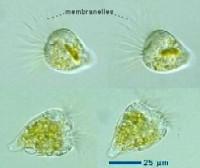- Endosymbiosis theory: modern eukaryotic cells evolved from simple, phagotrophic cells that ingested bacteria and cyanobacteria; the prey was not digested, and physiological processes of the endosymbionts were used by the host.
- Lateral DNA transfer relocated endosymbiont DNA into the host nucleus
- Polyphyletic origin: Aquisition of endo- symbionts and rise of modern algae occured several times during evolution; algae as a group do not have one common ancestor
-
Primary
chloroplasts:
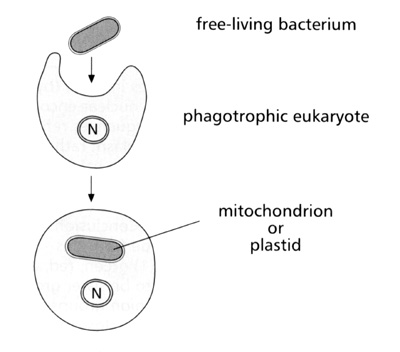
- The Loss of Chloroplasts:
- Heterotrophic algae: Some relatives of algae, predominantly parasites, did loose their plastids during evolution, or their plastids became inactive
- Toxoplasma gondii: A parasite in mammal muscular tissues; ca. 60% of domestic cats are infected by Toxoplasma
- Human infection occurs but is of minor impact in healthy people; babies and humans with immune deficiencies (AIDS) are prone to Toxoplasmosis
- Toxoplasmosis: transfer from mother to unborn baby can result in mental retardation, blindness, or death; AIDS patients may suffer severe brain damage leading to death
- Chloroplasts by secondary endosymbiosis:
- Origin: phagocytosis of prey with primary endosymbiont
- Plastids possess 2 outer membranes
- Algal groups: Euglenophytes, Cryptophytes, Chlorarachniophytes, Haptophytes, diverse Chromophytes (Ochrophytes)
- Nucleopmorph: extremely reduced eukaryotic nucleus between outer two membranes of the plastid, thought to origin from the nucelus of the primary eukaryote
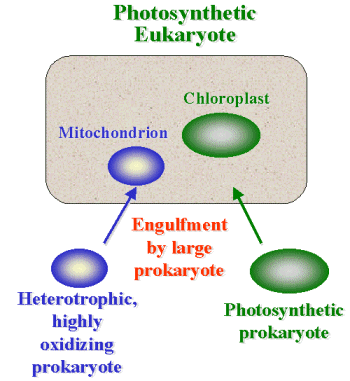
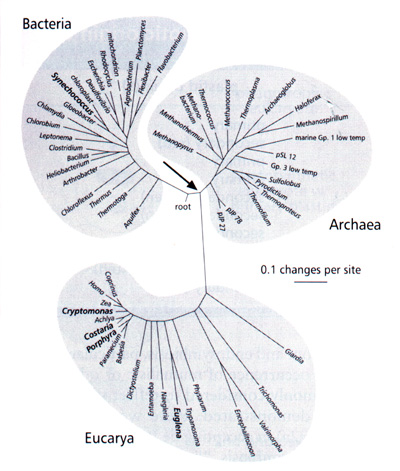
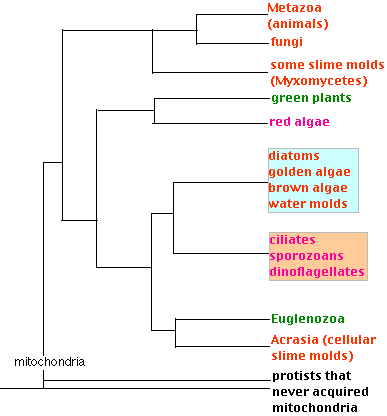
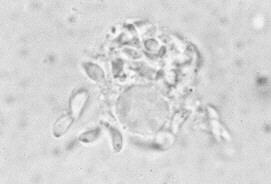
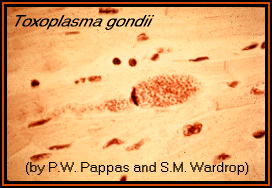
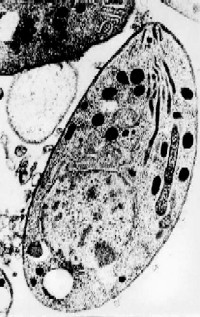
Toxoplasma gondii: left upper shows flagellates; right upper: Toxoplasma in cardiomuscular tissue; lower: EM thin section
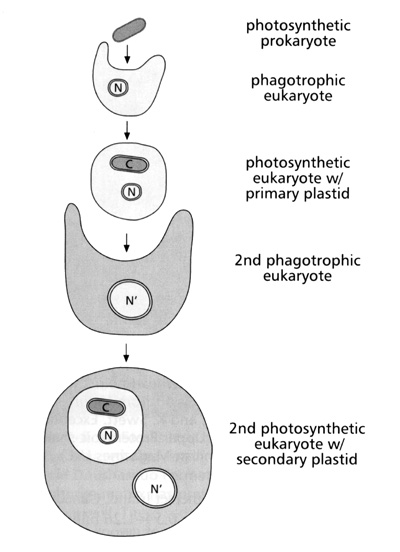
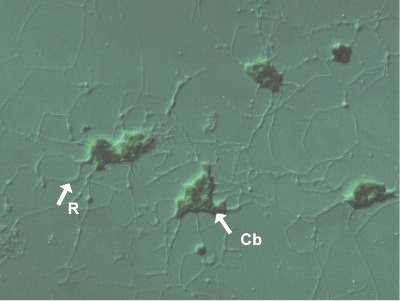
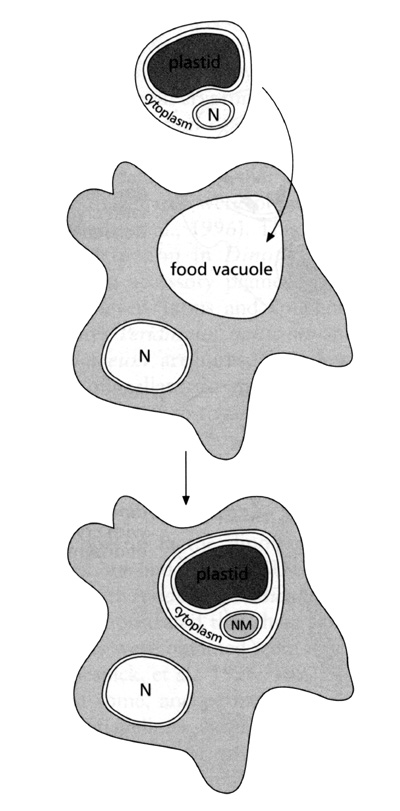
The Chlorarachniophyte Gymnochlora stellata exhibits an amoeboid growth form with secondary plastids
- Tertiary Endosymbiosis in Dinoflagellates
- Origin: phagotrophy of prey with secondary plastid by a heterotrophic dinoflagellate
- Endosymbiont reduction: the endosymbiont is reduced to loose its primary and secondary nucleus; DNA is laterally transferred into the dinoflagellate nucleus (extremely large)
- Rubisco differs in dinoflagellates in that it is only composed of large subunits (not 8/8 small/large) and only 25-30% homologous to other algae‘s Rubisco sequence; origin from proteobacteria or lateral gene transfer from mitochondria, which originated from proteo-bacteria
- Phycoerythrin can be detected in Dinophysis
- Algal Symbionts in Animals
- Algal endosymbionts occur in freshwater and marine protozoa, sponges, coelenterates, flat-worms, molluscs
- Zoochlorellae: most common symbiont in freshwater animals is green alga Chlorella
- Zooxanthellae: dinoflagellate Symbiodonium as symbiont in corals, sponges and others
- Marine Systems: other endosymbionts than Symbiodinium occur as well: Chlorella sp., diatoms, cryptophytes, unicellular Red algae
- Kleptoplastids
- Kleptoplastids: Some heterotrophic flagellates and ciliates ingest algae and maintain them for a limited time
- Origin: various algae, mixture of plastids
- No symbiosis: the hosts lack essential genes expressed by the algae, and the chloroplasts lack these gene products because the prey nucleus is digested; kleptoplastids are a temporary solution
- Oligotrich ciliates are important marine microzooplankton, which are often obligate or facultative mixotrophs
-
Sea slug
(Elysia; mollusc) collects plastids from green seaweeds
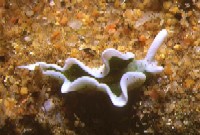
- Some dinoflagellates possess klaptoplastids instead of symbionts
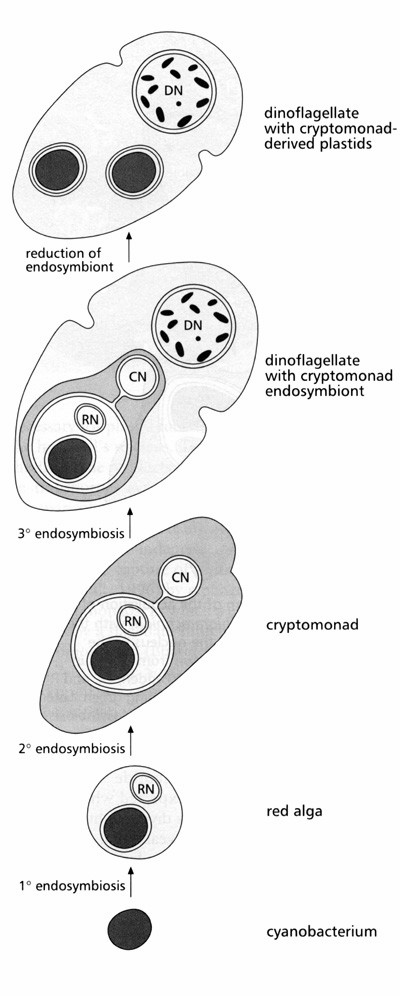
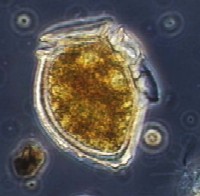
Autofluorescence microscopy of the dinoflagellate Dinophysis
norwegica (upper picture in bright field): left: blue-light excitation
causes red chl.a fluorescence and yellow phycoerythrin fluorescence; right:
green-light excitation produces bright red phycoerythrin fluorescence (no
chl. a fluorescence under green light excitation!)
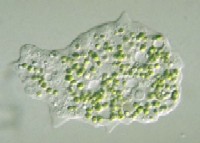
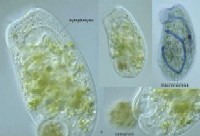
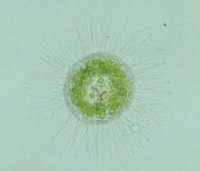
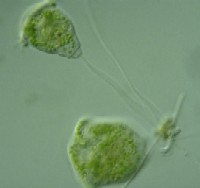
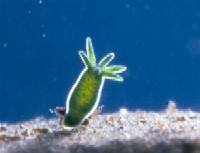
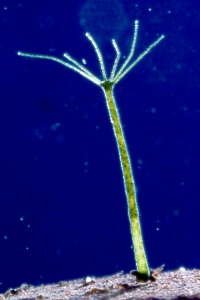
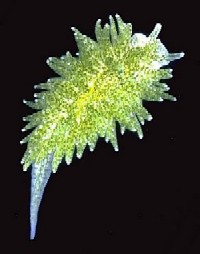
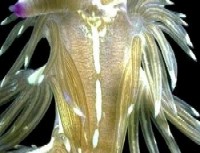
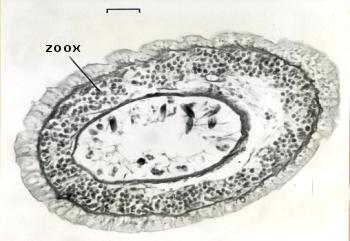

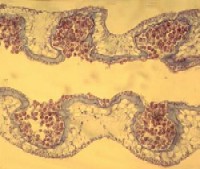
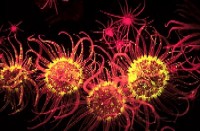
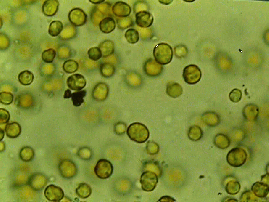
From upper row: Nudibranch snail with zooxanthellae; cross section through nudibranch filament showing layer of endosymbiontic zooxanthellae (zoox). Middle row: soft coral with zooxanthellae; the cross section through the coral tentacles reveals that zooxanthellare in this coral species are not living within the coral tissue but in special groves in the tentacles. Lower row: left shows a coral with zooxanthellae photographed under blue light, which made the zooxanthellae's chlorophyll fluoresce red; right: isolated zooxanthellae from coral tissue.
